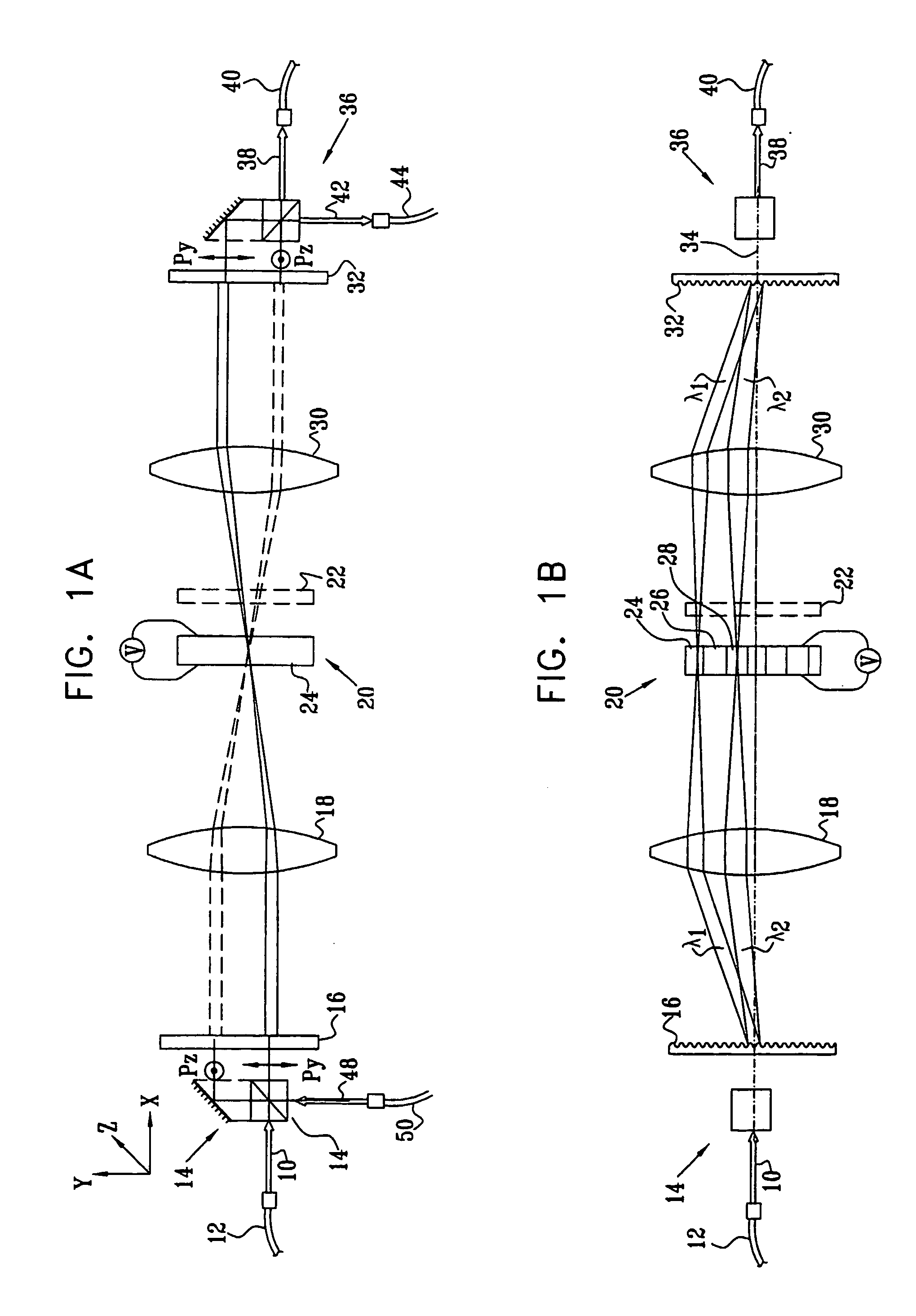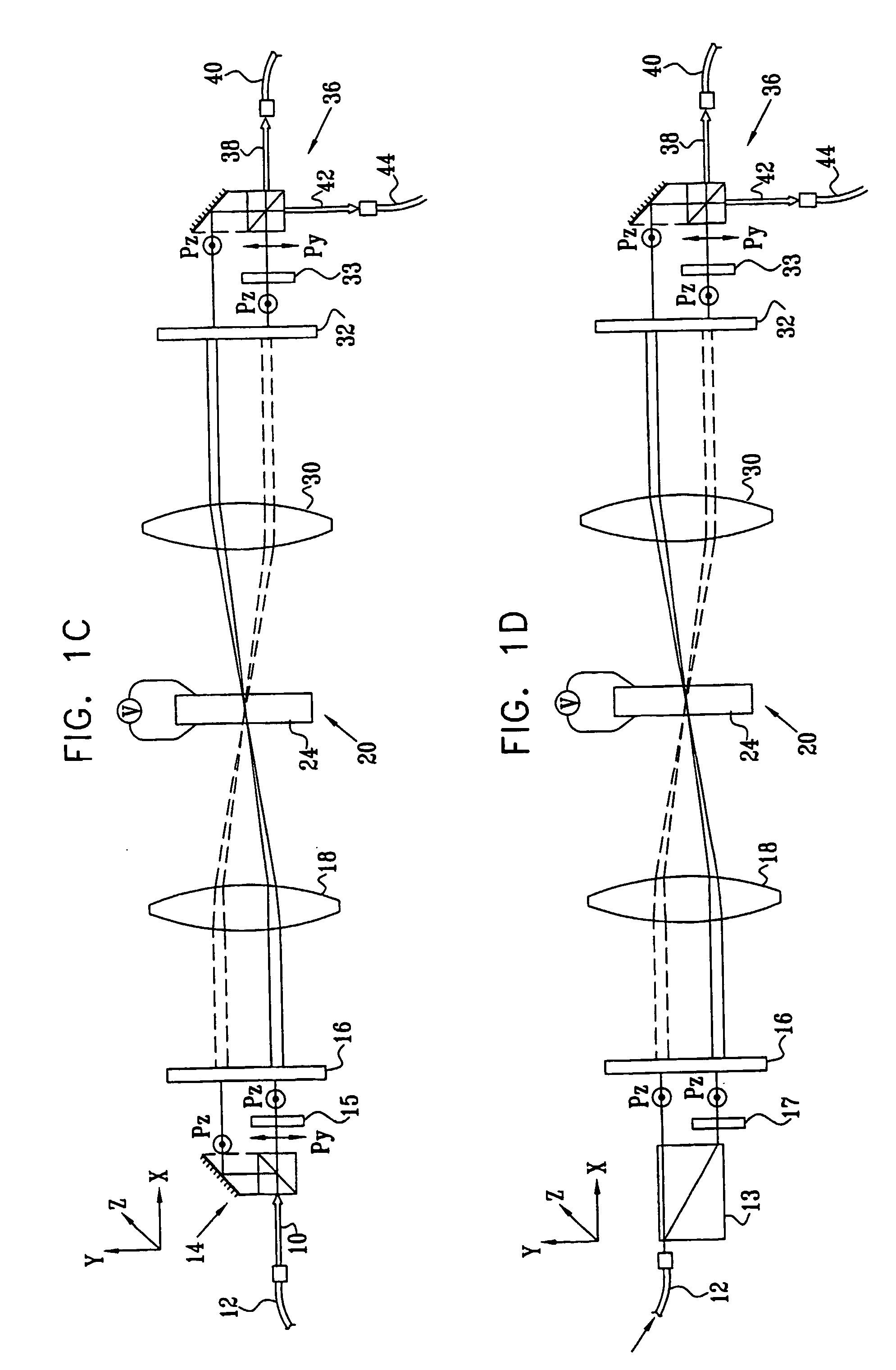Wavelength selective optical switch
a selective optical switch and wavelength technology, applied in the direction of multiplex communication, polarising elements, instruments, etc., can solve the problems of complex construction, complicated construction, complicated alignment, etc., and achieve the effect of simple construction
- Summary
- Abstract
- Description
- Claims
- Application Information
AI Technical Summary
Benefits of technology
Problems solved by technology
Method used
Image
Examples
Embodiment Construction
[0035] Reference is now made to FIGS. 1A and 1B, which illustrate schematically different views of a wavelength selective optical switch, constructed and operative according to a first preferred embodiment of the present invention. FIG. 1A is a view of the device from one plane, known as the polarization splitting plane, while FIG. 1B is a view of the same device as seen from a plane preferably orthogonal to the first and known as the wavelength dispersion plane. The operation of the wavelength selective optical switch can be understood by reference simultaneously to the signal paths shown in FIGS. 1A and 1B.
[0036] An input optical signal 10, such as would be obtained after collimation from the end of an optical fiber 12, is input into a polarization beam splitter (PBS) 14, shown in FIG. 1A as a split prism PBS, though it is to be understood that other preferred types of PBS may also be used for this function. The PBS is so orientated that it preferably splits the input signal into...
PUM
 Login to View More
Login to View More Abstract
Description
Claims
Application Information
 Login to View More
Login to View More - R&D
- Intellectual Property
- Life Sciences
- Materials
- Tech Scout
- Unparalleled Data Quality
- Higher Quality Content
- 60% Fewer Hallucinations
Browse by: Latest US Patents, China's latest patents, Technical Efficacy Thesaurus, Application Domain, Technology Topic, Popular Technical Reports.
© 2025 PatSnap. All rights reserved.Legal|Privacy policy|Modern Slavery Act Transparency Statement|Sitemap|About US| Contact US: help@patsnap.com



